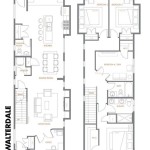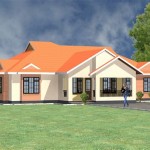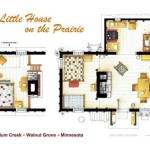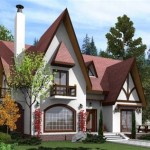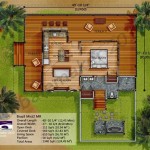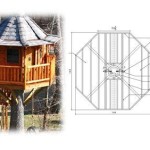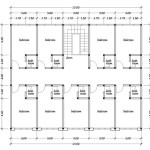Tree House Bed Building Plans: A Comprehensive Guide
The allure of a tree house extends beyond childhood whimsy, permeating the realm of creative bed design. A tree house bed provides a unique and imaginative sleeping space, blending the comfort of a bedroom with the adventurous spirit of a treetop hideaway. Constructing such a bed requires meticulous planning, adherence to safety standards, and a clear understanding of the necessary building techniques. This article offers a comprehensive guide to tree house bed building plans, outlining crucial considerations and providing a framework for successful construction.
Before embarking on this ambitious project, a thorough assessment of available space is paramount. The dimensions of the room, ceiling height, and placement of existing furniture will dictate the size and configuration of the tree house bed. Accurate measurements are essential to ensure the bed fits comfortably within the room without compromising functionality or aesthetics. In addition to spatial considerations, the structural integrity of the floor must be evaluated. A tree house bed, even one designed for indoor use, can be substantial in weight. It is vital to confirm that the floor can safely bear the added load. Consulting a structural engineer may be necessary, particularly in older homes or those with questionable structural stability.
The design of the tree house bed is a critical aspect of the planning process. The design should reflect the intended user's age, interests, and physical capabilities. A bed designed for a young child will differ significantly from one intended for a teenager or adult. Factors such as the height of the bed, the accessibility of the sleeping area, and the inclusion of safety features like railings and ladders must be carefully considered. The aesthetic elements of the design should also align with the overall décor of the room. The use of natural wood, themed paint colors, and whimsical accessories can enhance the tree house ambiance. A detailed blueprint or sketch of the design is essential before commencing construction. This blueprint should include precise measurements, material lists, and step-by-step instructions.
Material selection is crucial for both the structural integrity and the aesthetic appeal of the tree house bed. Wood is the most common material used, offering both strength and versatility. Pressure-treated lumber should be avoided for indoor use due to potential chemical emissions. Instead, kiln-dried hardwoods like oak, maple, or poplar are recommended for their strength and durability. Softwoods like pine or fir can be used for decorative elements, but they should be properly sealed and finished to prevent splintering. Ensure all lumber is free from knots, cracks, and other imperfections that could compromise its structural integrity.
In addition to wood, other materials may be incorporated into the design. Plywood or oriented strand board (OSB) can be used for sheathing and flooring. Metal fasteners, such as screws, bolts, and nails, are essential for securely joining the various components of the bed. High-quality adhesives, like wood glue or construction adhesive, can also be used to enhance the strength of the joints. Finally, consider the finish of the bed. Non-toxic paints, stains, and sealants are recommended, especially for beds intended for children. These finishes will protect the wood from moisture and wear while also enhancing its appearance.
Key Point 1: Foundation and Support System
The foundation of the tree house bed is the most crucial element, providing the necessary support and stability. A well-designed foundation will distribute the weight of the bed evenly across the floor, preventing undue stress on any single point. The foundation typically consists of a frame constructed from sturdy lumber, such as 4x4 or 6x6 posts. These posts should be securely fastened to the floor using appropriate anchors or fasteners. The frame should be designed to accommodate the weight of the bed, the mattress, and the occupants. Cross-bracing can be added to the frame to further enhance its stability.
The support system for the sleeping platform is equally important. This system typically consists of a network of joists, which are horizontal beams that span the distance between the support posts. The joists should be spaced closely enough to prevent sagging or deflection of the sleeping platform. The thickness and spacing of the joists will depend on the span and the anticipated load. It is advisable to consult with a structural engineer or experienced carpenter to determine the appropriate joist size and spacing for the specific design.
Once the joists are in place, the sleeping platform can be constructed. This can be done using plywood, OSB, or solid wood planks. The platform should be securely fastened to the joists using screws or nails. The edges of the platform should be smooth and free from splinters. A mattress can then be placed on top of the platform to create a comfortable sleeping surface. Consider adding a layer of foam or padding beneath the mattress for added comfort and support.
Key Point 2: Construction Techniques and Safety Considerations
The construction of a tree house bed requires a range of carpentry skills, including measuring, cutting, drilling, and fastening. Accurate measurements are essential to ensure that the various components of the bed fit together properly. Use a tape measure, level, and square to ensure that all cuts are accurate and all angles are square. Power tools, such as circular saws, drills, and sanders, can greatly expedite the construction process. However, it is important to use these tools safely and responsibly. Always wear appropriate safety gear, such as safety glasses, ear protection, and a dust mask.
Fastening the various components of the bed together requires the use of appropriate fasteners. Screws are generally preferred over nails, as they provide a stronger and more durable connection. Use screws of the appropriate length and thickness for the specific application. Pilot holes should be drilled before driving screws to prevent the wood from splitting. Bolts can be used to join particularly heavy or stressed components. Use washers and nuts to ensure that the bolts are securely fastened. Adhesives can be used in conjunction with fasteners to further enhance the strength of the joints.
Safety is paramount throughout the construction process. Ensure that the work area is well-lit and free from clutter. Use scaffolding or ladders to reach high areas safely. Always follow the manufacturer's instructions when using power tools or adhesives. If you are unsure about any aspect of the construction process, consult with an experienced carpenter or contractor. Safety features, such as railings, ladders, and guardrails, should be incorporated into the design of the bed to prevent falls and other accidents. Regular inspections of the bed should be conducted to identify and address any potential safety hazards.
Key Point 3: Design Elements and Customization Options
The design of the tree house bed offers ample opportunities for creativity and customization. The basic structure can be enhanced with a variety of decorative elements, such as branches, leaves, and vines. These elements can be crafted from wood, fabric, or other materials. The use of themed paint colors and accessories can further enhance the tree house ambiance. Consider incorporating elements that reflect the intended user's interests and hobbies.
Ladders and stairs provide access to the sleeping area. Ladders are typically more compact and space-saving, while stairs offer a more gradual and comfortable ascent. The choice between a ladder and stairs will depend on the available space and the physical capabilities of the intended user. Regardless of the chosen access method, it is important to ensure that it is safe and secure. Handrails should be provided to assist with climbing or descending. The steps or rungs should be spaced comfortably and have a non-slip surface.
The sleeping area can be customized to provide a comfortable and functional space. Built-in shelves or drawers can be added to provide storage for books, toys, or other personal items. Lighting fixtures can be incorporated to provide illumination for reading or other activities. Consider adding curtains or drapes to create a sense of privacy and enclosure. The mattress should be of high quality and provide adequate support. Pillows, blankets, and other bedding should be chosen to create a comfortable and inviting sleep environment.
Finally, consider the overall aesthetic of the room when designing the tree house bed. The bed should complement the existing décor and create a cohesive and harmonious space. The use of natural materials, earthy colors, and whimsical accessories can enhance the tree house theme. Incorporate elements that reflect the intended user's personality and style. The goal is to create a space that is both functional and visually appealing, providing a unique and enjoyable sleeping experience.
By following these guidelines and carefully considering all aspects of the design and construction process, it is possible to create a tree house bed that is both safe and enchanting, providing years of enjoyment for the intended user.


Beach Hut Bed Tree House Diy

20240328 Bt Treehouse Layout Infographic Tree House Diy Plans
:max_bytes(150000):strip_icc()/B841E4B47C43367C7F005C3957922DC28050AC474012B226-5a38044db39d03003712a13d.jpg?strip=all)
14 Free Diy Loft Bed Plans For Kids And S

Diy Wood Pallets Tree House Bunk Bed Pallet Furniture White Beds

10 Diy Montessori Floor House Beds That Your Kid Will Love Free Plans If Only April

26 Best Treehouse Ideas For Kids Cool Diy Tree House Designs

Original Tree House Bunk Bed Designs Plans

10 Diy Montessori Floor House Beds That Your Kid Will Love Free Plans If Only April

Open Plan Room In Treehouse Plumis

